In recent years, with the rise of the global “menstrual equity” movement, more and more contemporary artists have taken menstruation as part of their artistic language, in order to break the silence and stigmatization that society has long attached to this biological phenomenon. Instead of avoiding the real state of the body, art creations use menstruation as a “repressed material” to express themselves. I will analyze these contemporary artworks for my curatorial inspiration and selection.
For instance, Sarah Levy’s Whatever–Bloody Trump (2015) became a viral act of protest, where the artist painted a portrait of Donald Trump using her own menstrual blood. This visceral response to Trump’s misogynistic rhetoric not only challenged his public image but also used menstruation as a medium of resistance, forcing visibility upon something often kept hidden.
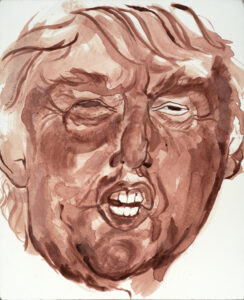
Whatever-Bloody+Trump
British artist Bee Hughes created a series of installations titled Cycles from 2016 to 2017. Based on the daily sensations of her body, she used menstrual blood and acrylic paint on sewn fabric to create long scrolls that symbolize the menstrual cycle. This work translates everyday bodily experiences into a visible artistic language, giving respect and aesthetic meaning to the rhythms of the physiological cycle.
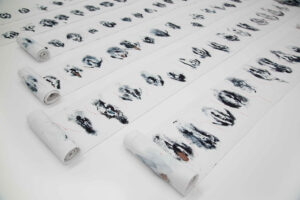
Cycles
Timea Páll’s The Diary of My Period (2017) is more personal. She collected her menstrual blood over a period of nine months and created a painting depicting a fetus. The work is both a tribute to life and the potential of the body, and a gentle but firm counterpoint to cultural attitudes that view menstrual blood as ‘dirty’ or ‘invisible’.
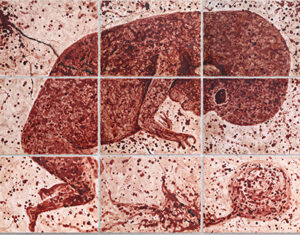
The Diary of My Period
Yapci Ramos’ video installation Red Hot, released in 2018, continues her exploration of women’s bodies and social rituals. She wrote and filmed videos in menstrual blood on her bathroom wall once a month for two years. The color red is a symbol of emotion in her work, a visual writing of the body, and a visual reversal of shame and mystery.
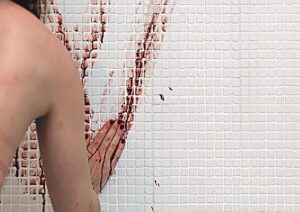
Red Hot
Illustrator Hazel Mead released two popular works in 2020: Period Pantones and Period Bingo. The former uses color swatches to show the changing shades of real menstrual blood, breaking the false image of menstrual blood as a “blue liquid” in the mass media, while the latter uses bingo to depict the hiccups of menstruation, such as “Suddenly getting my period while I’m out and about”, “Pants stained red”, etc. The artist’s work is also known as “Period Pantones” and “Period Bingo”, which are both popular in 2020, The latter uses bingo games to depict menstrual hiccups, such as “suddenly getting your period when you go out” and “having your pants stained red,” using humorous images to promote open discussion and make people reflect on cultural taboos about menstruation through laughter.
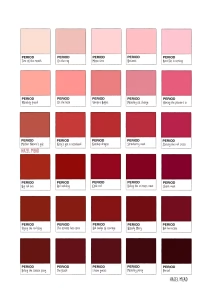
Period Pantones
American artist Alexandra Rubinstein has been painting with menstrual blood since 2023. In Bloody Mary, she uses menstrual blood to paint the female figure, challenging the association between menstruation and defilement through the reimagining of “blood” and the “female body”. In her new work Manxious (2024), she further shifts her focus to male responses, depicting men’s anxiety and avoidance of menstruation with humor and irony, and criticizing the gendered regulation of menstruation in modern culture.

Bloody Mary
American artist Alexandra Rubinstein has been painting with menstrual blood since 2023. In Bloody Mary, she used menstrual blood to paint the female figure, challenging the association between menstruation and filth by reimagining “blood” and the “female body”. In her new work of 2024, she further shifts her focus to male responses, depicting men’s anxiety and avoidance of menstruation with humor and irony, and criticizing the gendered regulation of menstruation in modern culture.
These works provided me with inspiration for choosing an artist. First of all my exhibition is in the UK, so I will prioritize British artists so that the shipping costs of the works will be relatively less. Bee Hughes and Hazel Mead are good choices, especially Hazel Mead’s works have also been exhibited at VAGINA MUSEUM EXHIBITION in London, UK. Turning to male responses, they depict male anxiety and avoidance of menstruation with humor and irony, criticizing the gendered regulation of menstruation in modern culture.
In terms of venues, I have worked with my mentor to identify and shortlist a number of spaces that meet the budgetary constraints but also have geographical advantages. The following are the two main sites under consideration:
The first is the Glasgow Women’s Library. As the only accredited museum in the UK focusing on women’s lives, histories and achievements, the library and archive is not only rich in library and archive resources, but also committed to supporting exhibitions and public education programs on gender issues. Its collections include historical artifacts from the feminist movement, lesbian archives, and a variety of women’s publications, and its exhibition spaces are mature and issue-specific, which resonate well with this project’s themes of menstruation and gender politics. In addition, the institution’s broader public base, community connectivity, and educational orientation are also conducive to audience engagement and critical thinking.
Another alternative venue is Ricefield Arts and Cultural Centre, a Glasgow-based charity that promotes Chinese arts and culture, cultural diversity and cross-cultural dialogue. The Center curates exhibitions, workshops and community projects throughout the year and has a particular strength in supporting Chinese and Asian art practices. The location of Seeing Red will allow for a more direct connection with Chinese audiences and contextualize the visibility and dialogue of menstruation in non-Western cultures.
The final site selection will be based on a comprehensive assessment of feasibility (e.g., rent, exhibition schedule, equipment conditions, etc.) to ensure that the exhibition can be presented in the appropriate cultural and social context.
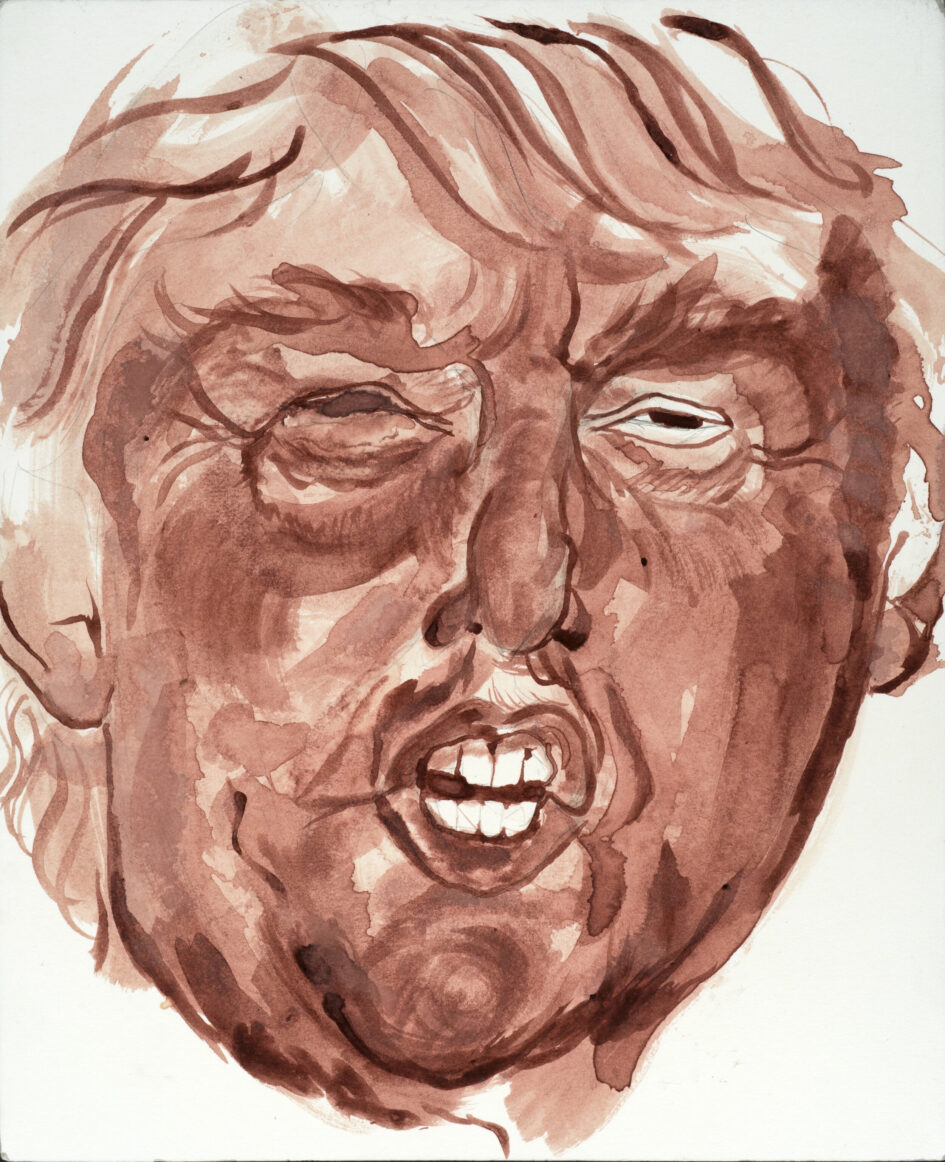


Leave a Reply